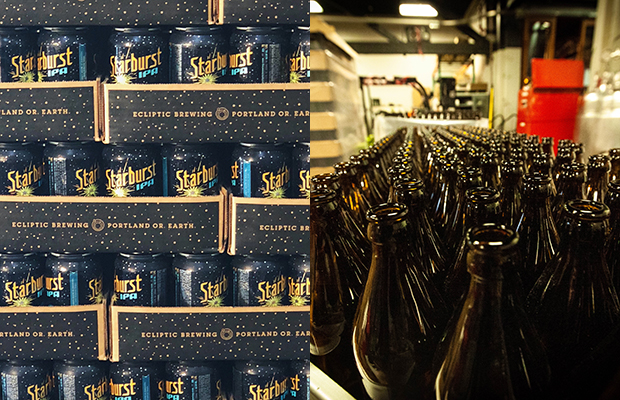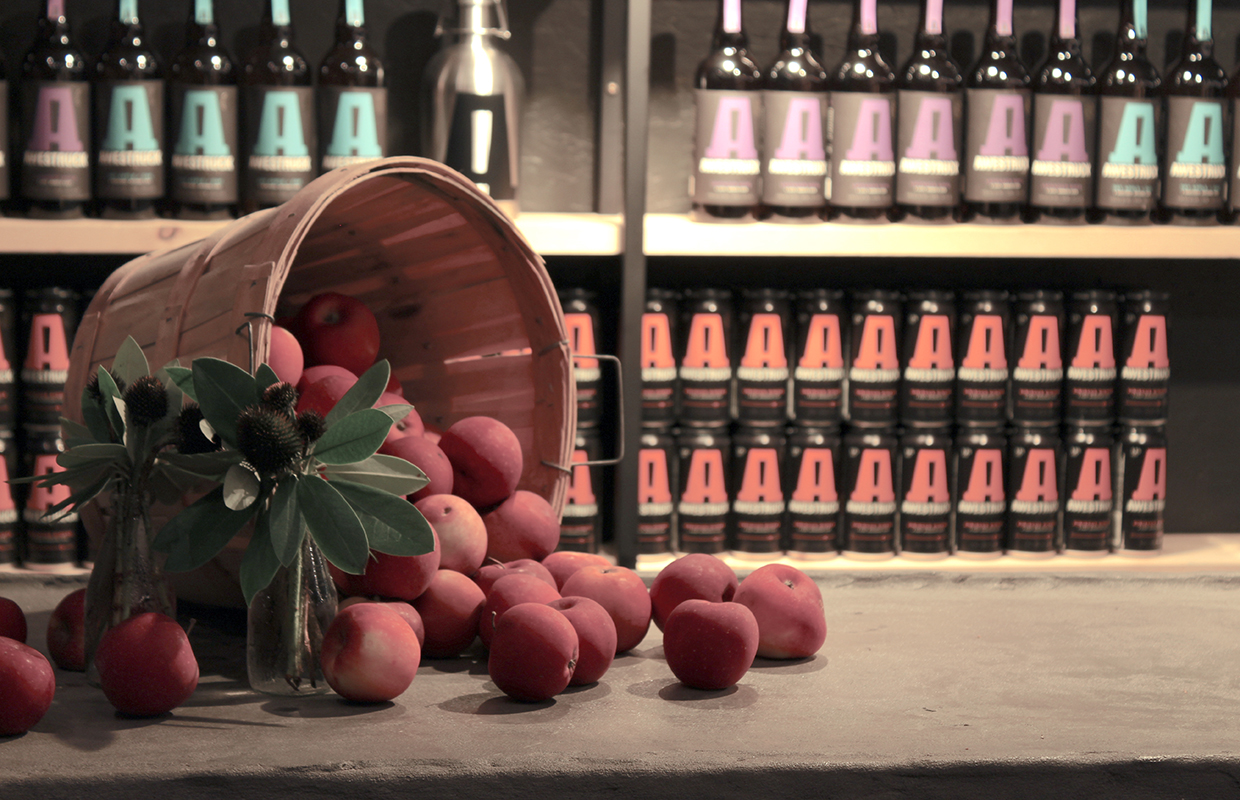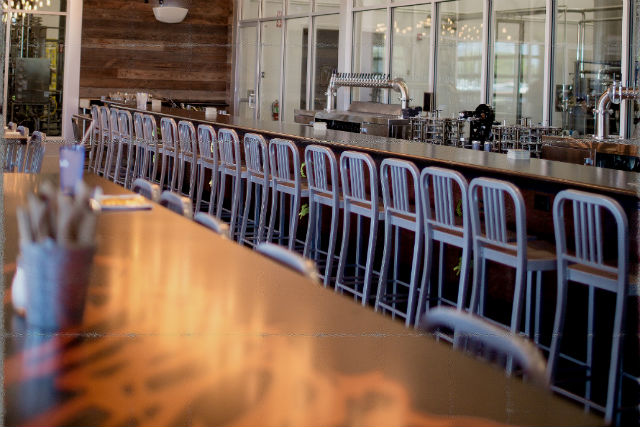
When you’re running a business, margins are important to success in a capitalist market, and at the same time, being environmentally friendly is a priority for many brewers.
But what goes in bottles, and what should be canned? What makes consumers choose a bottle over a can and vice versa? A couple of breweries gave their insights into the goings on inside their own breweries.
At Ecliptic Brewing, an Oregon brewery, an individual bottle will cost a consumer $3.99 and a six-pack of cans goes for $10.49 within the All the Time and Seasonal Series options.
Of course the $10.49 six-pack is technically a better price point for consumers at $1.74 a can, but bottles are better for a true single serving experience, explained Sales Manager Erin Grey Kemplin, since the cans are only sold in a 4, 6, and 12 packs.
“Bottles are also good for anything that may be a bit higher in ABV or with Belgian yeast because we have found beer ages better in glass,” Kemplin said.
The other side of the equation is that bottles are breakable, so consumers won’t want to take them on outdoor adventures, whereas cans are lighter and more adventure-friendly.
However, some cans still have BPA in their lining. Exposure to BPA can be a concern because it can lead to possible health effects, though the FDA has said BPA is safe at very low levels.
When choosing whether to bottle or can, Ecliptic takes into account the style of the beer as well as the cost of the product. That’s used to determine the series and packaging of each beer the brewery produces.
For Double Mountain Brewery, with taprooms in Hood River and Portland, Oregon, the upsides of bottles outweigh the initial higher cost to the brewery. Cans are cheaper on the initial buy-in, but they’re not reusable, which in turn actually makes them more expensive than bottles.
“Cost and quality are the ultimate drivers for breweries to choose refillable glass. In terms of production equipment, canning lines are also more expensive capital investments than traditional bottling lines,” Marketing Director for Double Mountain Hames Ellerbe said.
A canning line can cost significantly more than a bottling line, but will require fewer employees to run. However, some manufacturers require a higher initial can purchase than they require of bottles, which can be hard for small brewers to afford. One way to offset this investment is to order blank cans and send them off to be shrink wrapped individually or label them in house according to the different types of beer going in them.
Glass bottles arrive blank, which factors into the lower cost, and bottle labeling machines are cheaper than shrink sleeve labelers for cans.
In 2018, President Donald Trump’s administration announced a 10% tariff on aluminum imports. With the beer industry relying heavily on aluminum, it increased the manufacturing costs for American brewers. The tariff has since been exempted for Mexico and Canada, brining aluminum costs back down to pre-tariff levels.
Ellerbe said there is a misconception that the excess weight, breakage, and additional space used in shipping actually increases the carbon footprint of refillable glass. However, taking these factors into account, the carbon footprint is still lower than cans.
“Even though refillable bottles are designed to be used up to 25 times or more, even the first single use of a refillable glass bottle creates a smaller carbon footprint compared to cans,” Ellerbe explained.
On the consumer side, bottles and cans are relatively the same price for most craft beer.
“The large mega breweries with the ability of scale can produce cans more cheaply and that has been passed onto to lesser prices for mega beer in cans,” Ellerbe said. “That being said, consumers are able to purchase a more sustainable container with refillable bottles.”
Bottles keep a better quality of beer because they have less dissolved oxygen, and Double Mountain recently invested in a CO2 catch system, which allows the brewery to reuse much of the CO2 used in the brewing process.
Double Mountain’s mission is to support sustainability, and with bottles, they feel consumers get a better taste with less waste. Similarly to cans, dark brown-colored bottles provide great light protection. Bottles are more environmentally friendly, with a 90% smaller carbon footprint than cans.
“Hence, the choice for Refillable Bottles, which may be reused an average of 25 times, have a 90% lower carbon footprint than cans, do not contain a plastic lining, and have less dissolved oxygen, providing superior taste,” Ellerbe said. “Accordingly, this is a no brainer, as we consistently strive for a more sustainable future, which, along with numerous other projects, why we covered the roof of our 27,000-square foot warehouse with solar panels two years ago.”






1 Trackback / Pingback